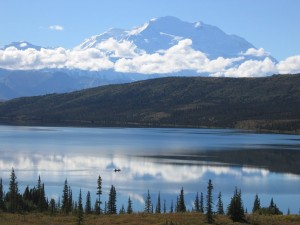It isn’t often when an attempt to draw attention to an issue also highlights how little one really cares about that issue. Put another way: imagine a Venn diagram where the circle of pointless exercise overlaps almost perfectly with the circle of consciousness-raising about conservation and you get a neat graphic illustration of the U.S. Interior Department’s report on its America’s Great Outdoors initiative.
On the surface this effort sounds like a win for people who like the outdoors: the Interior Department report, released on Thursday, identified 101 high-priority conservation projects that, if completed, would promote recreation and jobs. But take a tiny step past the headline and you stumble across the following:
- First, the nation’s high-priority projects are spread across the states with a miraculously even distribution. Each state gets two projects and the District of Columbia gets one. That doesn’t suggest an attempt to tackle the most pressing national priorities. Instead, it suggests a nod to political realities, to the desire to consolidate the widest possible base of support for what would be an expensive public works program. Except:
- Second, there’s no money here. As the AP reports, the Interior Department says most of these high priority projects “will have to find funding somewhere besides the U.S. government.” Like what? A home equity loan?
So why do this? In its press release, Interior tosses around some loose talk about the (broke) federal government providing “technical support” and coordination. And the agency promises to “partner with states and communities to leverage grants, private funding and other resources.”
Leverage? Super.
The lack of seriousness in this endeavor is stark. In his own release, Salazar says, “These projects represent what states believe are among the best investments in the nation to support a healthy, active population, conserve wildlife and working lands, and create travel, tourism and outdoor-recreation jobs across the nation.”
We are big fans of the Interior Department. It has a huge job and it is woefully underfunded. And maybe we’re missing the point of this, but it seems that when you are serious about making an investment, you very quickly calculate a number. That’s what you do.
That’s not what happens with America’s Great Outdoors initiative. There are no costs, no cost estimates, no ranges, no dollar signs in the report. And the AP reports that, when asked, Salazar admitted that he didn’t know the total cost of funding these top priorities. But he added that he was “hopeful that as Congress considers appropriations for the future, they will recognize conservation is important for very important reasons, like jobs”—which is a line that could fit neatly in a middle school civics report.
Photo of canoe on Wonder Lake, Denali National Park, by Kent Miller










